The two countries hit hardest financially by the war in Ukraine are the two countries at war: Ukraine and Russia. While Western sanctions have hit the financial sectors of Russia, President Putin has imposed strict “reverse” sanctions, essentially bans on certain Western products. These bans have limited imports and thus driven up costs of things like food. By design the reverse sanctions are bans to cut off the Russian market to Western goods, but the hard reality is that Russia has delivered a financial blow to her own citizens by the resulting price inflation.

In Ukraine, the cost of war has driven up the cost of goods, too. Last year’s revolution in Kyiv (Kiev) tanked the already corrupt and teetering economy, and the most vulnerable to high prices and inflation are the elderly. This is a blow to a society in which food is already one of the highest living costs due to relatively low salaries and cheap housing. The average monthly salary in Ukraine varies from under $200 to about $450, depending on the city and the occupation.
Many families of both countries maintain a dacha, a cabin or small dwelling along a riverfront or in the forest. While the typical dacha lacks many of the comforts of life, many do not have running water or electricity, they do have gardens and fruit trees. It is not unusual for a family to raise a large percentage of their annual food needs in simple garden plots in the country.
With rapidly increasing food prices, we wanted to take a snapshot of late December to early January food prices in Kyiv and in Moscow. To approach the project we began with these essentials: eggs, cheese, bread and sausage. Americans think of these as primarily “breakfast” foods, but in Eastern culture there really aren’t many foods tied to a particular time of day, and thus these are among the daily essentials to be served at any meal.
Below: sausages/pressed meats in Ukraine.
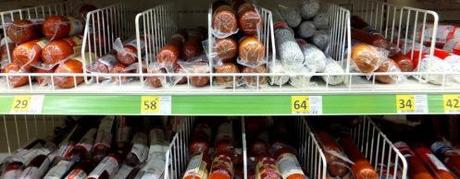
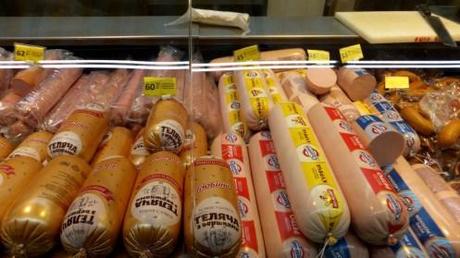
Things you might like to know:
- Russians use the Ruble as currency. Abbreviation: руб, or p (which is the letter “R” in Cyrillic).
– Ukrainians use the Gryvnia, sometimes written as Hryvnia, as their currency. Abbreviation: грн.
- Sausages and many meats are typically pressed into rolls as you can see. They are a dietary staple.
– Eggs are either sold individually, loose by each egg, or in cartons of 10.
– Most foods are sold by the kilogram. Abbreviation: kg
Next: sausages/pressed meats in Russia. In some cases when inflation is rising rapidly, prices are not updated in a timely fashion.
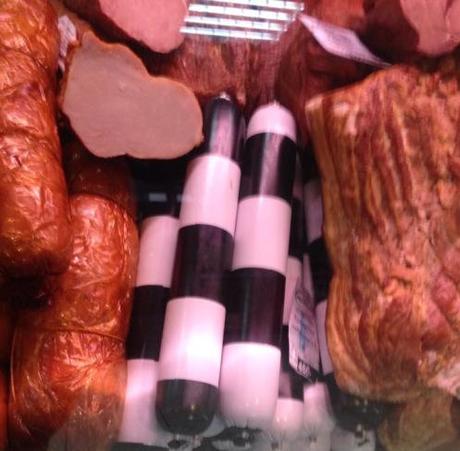
While the sausage pictured below is a veal sausage, and priced more than a bologna for example, it is representative of how prices have risen in a very short period of time in Russia.
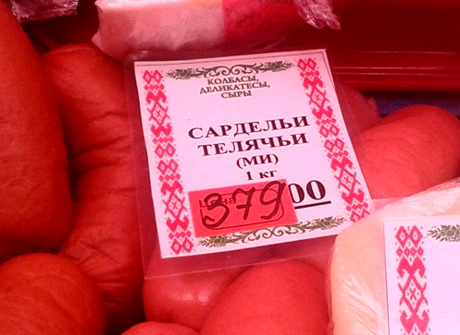
Depending on the brand, eggs in Ukraine are averaging around 41 грн for a carton of 10 eggs. That is about $2.60 when converted into dollars.
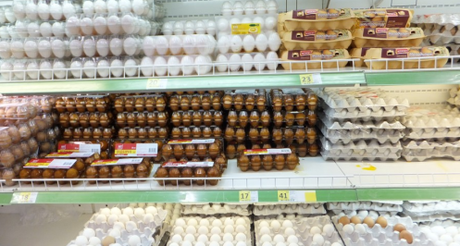

In Russia a carton of 10 eggs is selling for about 52 руб (rubles). To put that into perspective, 52 rubles is around 86 cents in US dollars at today’s exchange rate. That may seem low to American readers, but bear in mind that the Ruble has plunged in value; it was not that long ago that a ruble was worth about 40 cents, but today it is only worth about 16 cents to the dollar. The result is that purchasing power has plunged, while at the same time food prices are rising rapidly with inflation.
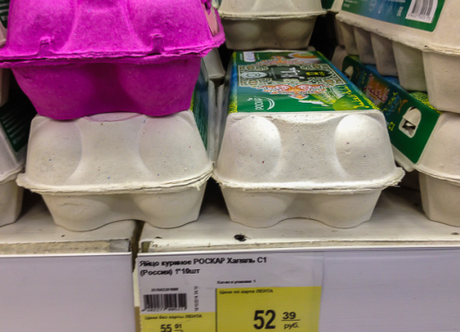
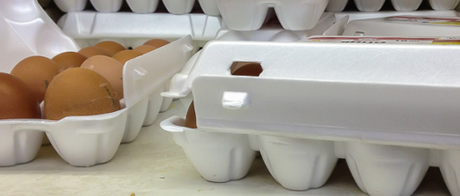
As for bread, we quickly found a loaf in a Moscow market for just 29 руб; just over $2.00 per loaf in dollars.
Finally, pass the cheese please! No, literally. It is too expensive these days. Averaging between 75 and 90 грн per kg in Ukraine, that is well over five dollars per kilogram.
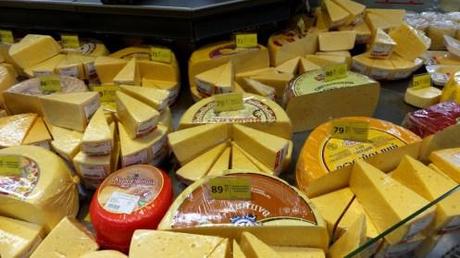
If one thinks the cheese is expensive in Ukraine, try Russia. As you can see, a Russian consumer can easily pay up to 459 руб (or $7.50) per kg. It just proves that the question is no longer “who moved my cheese?” but the new question has become, “who can afford to buy my cheese?”
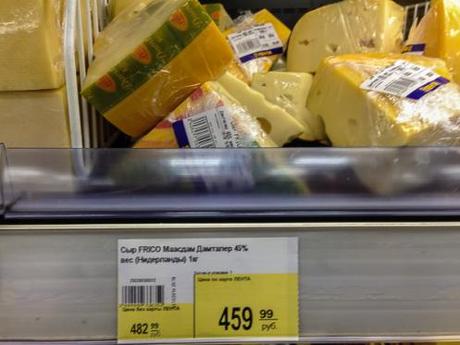
Many of our Western readers will look at these prices and wonder what the fuss is all about. From New York to California, some of these prices seem very low. But keep in mind that most Americans earn more than $200, $300, or even $500+ per month. From that vantage point, one can perhaps understand how world events are squeezing the financial life out of the average “man on the street” in this part of the world.
Now if we could just find a way to squeeze blood out of those famous Russian beets….
(Photo credits: Natamax-LiveJournal in Ukraine, and Anatoliy Migov in Moscow.)
